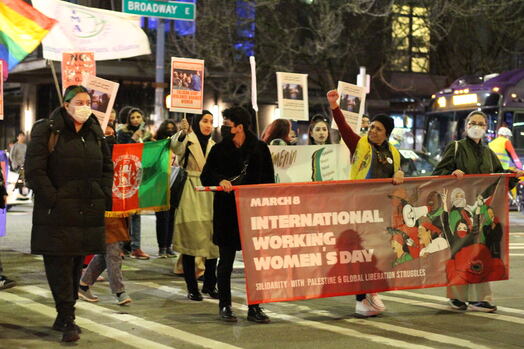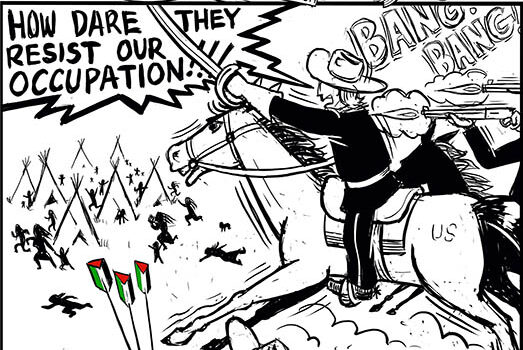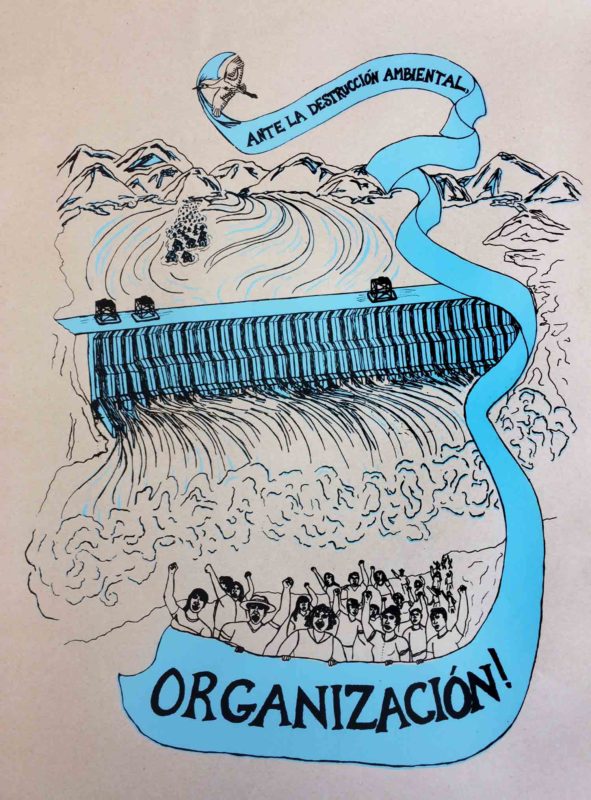
UNCLE SAM WANTS YOU TO STAND IN SOLIDARITY WITH THE PEOPLE OF OAXACA
(Troy, NY) November 20, 2006
Who: Concerned People’s of Troy and the Tio Zapata Brigada
Where: The Uncle Sam Monument, River and Front Street, Troy, NY
What: Uncle Sam stands for freedom and democracy and people in the southern state of Oaxaca in Mexico are being violently repressed by corrupt government and paramilitary forces. In solidarity with freedom for the peoples of Mexico and on the anniversary of the Mexican Revolution, Uncle Sam choose to honor another hero of freedom, Emiliano Zapata, by dressing up in his iconic garb. HE WANTS YOU to take action in support of the people’s popular movement in Oaxaca.
Why: On November 20th, allies of the EZLN will shut down Mexico in a general strike in protest of repression and recent murders in Oaxaca. For the past six months, the people of Oaxaca have staged an encampment and led a social movement to oust their governor, Ulises Ruiz and have faced arrests, attacks, and killings by paramilitary groups connected to the PRI government of Oaxaca. After the murders on October 27th (including that of New York journalist, Brad Will) federal police moved into Oaxaca and attacked the people’s encampment and the University. Oaxaca students, teachers, and APPO are resisting the police attacks, and on Monday, students and activists are demanding the removal of police forces, the removal of the illegitimate governor Ulises Ruiz, and the recognition of APPO’s (People’s Popular Assembly of Oaxaca) right to form their own direct democracy.
FOR MORE INFO ON THE SITUATION:
NYC Indymedia
Enlace Zapatista
Oaxaca Revolt
APPO
Indymedia Mexico
Tio Zapata in Troy, NY
November 20, 2006








Incredible and creative! A great solidarity action with the movements of southern Mexico. MORE!
Yes, we need to do more. The crises of bush endangering our entire military in Iraq and the rapidly descent into the lowest reaches of hell by the poor Iraqi people and our soldiers and marines and the striker group in the Gulf threatening Iran and endangering our Navy makes it hard to spare time for the amazingly courageous people in Oxaca.
The vile plan of ORDER OUT OF CHAOS by those who deliberately create bloody chaos so people will accept an authoritarian, fascist government has been effective, but the more people learn about the strategies of the overlords, the more people will RESIST!
A totally ridiculous article from the times
By MARC LACEY
Published: December 28, 2006
OAXACA, Mexico, Dec. 21 — There is a new smell in the air here, competing with the aroma of mole sauce that routinely wafts through Oaxaca. It is the smell of paint fumes.
Skip to next paragraph
The New York Times
Protests are as much a part of the culture of Oaxaca as its cuisine.
Work crews are everywhere, retouching the colonial facades that give Oaxaca its charm and draw tens of thousands of visitors a year. But in this politically charged city in southern Mexico, where protesting is as much a part of the culture as the distinctive cuisine, even the cleanup is causing arguments.
Just weeks ago, Oaxaca was a wreck. Graffiti marred its buildings. Burned-out vehicles blocked its roads. Angry protesters confronted riot-equipped police officers around the charming central square.
The protests, which began with teachers seeking a pay raise but grew to include an array of leftist groups and indigenous organizations, are continuing sporadically, but officials have begun trying to scrub away the evidence of what occurred.
Not everybody agrees on the best approach.
Carlos Melgoza, director of the Institute for Cultural Patrimony of Oaxaca, which is responsible for sprucing up 482 blocks and 21 memorials in the city, intends to use high-pressure machines to spray sand onto limestone facades to grind away the painted slogans.
But Rafael Bergara, who helped in the effort to persuade the United Nations Educational, Scientific and Cultural Organization to designate Oaxaca as a world cultural site in 1987, has argued in the local press that such an approach could do more harm than good and end up permanently damaging the structures.
Cost estimates are also at odds. The National Institute of Anthropology and History put the damage at $30 million. The Institute for Cultural Patrimony of Oaxaca says the cost of repairs will be less than a third of that. Estimates from other experts similarly vary widely.
Such back-and-forth is nothing new in Oaxaca, where historic preservation is a topic close to many hearts. When McDonald’s planned a restaurant in the central square some years back, Oaxacans took to the streets to keep the burger joint out. Some residents still resent the conversion of a 16th-century monastery into a luxury hotel.
“There’s always a debate about everything in Oaxaca,” said Jorge A. Bueno Sánchez, director of the botanical garden. He noted that Oaxaca, which is on an earthquake fault and has had quake damage at various times over the years, has experience remaking itself. “We’re used to starting again,” he said.
At the height of the protests, which began in the summer, Oaxaca was a shabby version of its former self. The slogans painted on surfaces everywhere shouted “Assassin!” and “Get Out, Ulises!” among other things.
Put up by followers of the Popular Assembly of the Peoples of Oaxaca, a loose coalition of protest groups, the messages were aimed at Gov. Ulises Ruiz, whom many Oaxacans accused of engaging in heavyhanded tactics in breaking up a teachers’ strike in June and ignoring the people of the state.
The protesters have not changed their demand that Mr. Ruiz resign, but the authorities have rounded up many top leaders of the protest coalition. The federal police, who took back the center of the city from protesters in October, ceded control of Oaxaca back to state law enforcement officials this month.
The protesters say they have not given up, but the painting and scrubbing continues.
Private companies have adopted blocks around the central square and have begun repainting buildings there in their vivid blues, reds and yellows. Some of the graffiti is proving hard to wipe out, though.
The giant “666,” the apocalyptic biblical reference that someone scrawled on the front door of the 16th-century Santo Domingo Church, is still visible. Burn marks on some of the limestone outside the church, and in other parts of the city, are reminders of the bonfires that lit the evening air during the protests. Windows remain smashed, including those on the American Consulate here.
Still, Francisco Toledo, a noted Mexican artist who pours much of his wealth into buying up historical properties and preserving them, said the damage that protesters had left was not as bad as that committed by skateboarders who wore down the limestone with their boards, and drunks who threw bottles at historic artifacts.
“The city was not well taken care of before this,” Mr. Toledo said. “Now it’s worse.”
Claudia López Morales, an architect active in restoring Oaxaca’s historical structures, is philosophical about the effects of the protests that remain visible. “Some of this damage will always be visible, and maybe that’s not bad,” she said. “What happened is part of our history.”
As she walks the cobblestone streets of Oaxaca, she said, she feels a mix of emotions. “There’s more damage to the heart of this city than to the buildings,” she said. “We can paint everything, but how do we repair our heart?”
Mr. Ruiz, in a recent speech, spoke of his desire to reconcile with the protesters and salve the wounds of the community. “We want a new Oaxaca,” he said. But many saw that as just talk and said that they were not buying it.
Jesús Sánchez Alonso, an economics professor at the Oaxacan Technological Institute who sympathizes with the protesters, says the real cleanup that Oaxaca needs is of its corrupt and arrogant politicians.
“The government doesn’t want to change things,” he said. “They want to paint. They want cosmetic changes.”